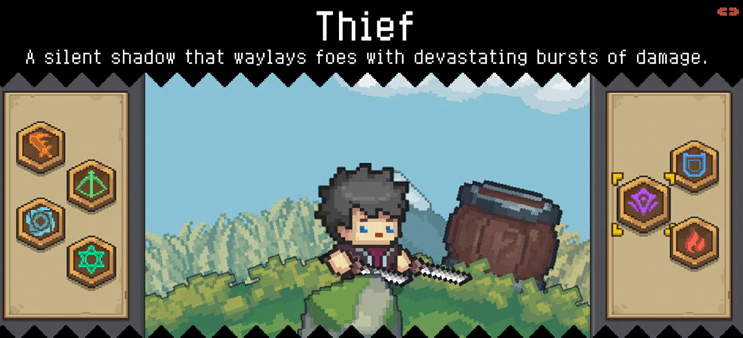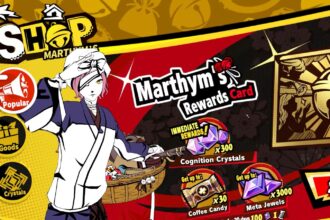Soul Knight Prequel is a good game for those who want to experience the classic hack-and-slash pixel-art games popular decades ago. But like many different games, this one comes with its own basic classes that the player can choose from at the start.
Some players may get overwhelmed by the different choices they have, and that’s understandable for any role-playing-style game.
So, to make things easier for you, we’ve come up with a guide of all of the basic classes in this game so that you would know which one is suitable for you.
All Basic Classes
Warrior

Common in most RPGs and similar game genres, the Warrior class is pretty much straightforward in its approach because it specializes in basic close-range attacks and classic weapons, including swords, great swords, shields, and lances.
Warriors are no-brainers because all you need to do is to get close to the enemy and hack your way through them. They are easy to use for most players.
The problem with this class is that it doesn’t excel in speed despite the high damage outputs that they are capable of. Strength (STR) is the main stat of this class, and that means that it is best for those who want a straightforward character that simply overpowers enemies.
The Warrior class can serve as the component to form the more advanced combined classes, such as Warliege (Aegis), Pyroknight (Pyromancer), and Assassin (Thief).
Aegis

If the Warrior class excels in straightforward attacks and on damage output, the Aegis class is the defensive counterpart.
This class excels in its defensive capabilities, making it one of the hardest to damage and kill in the entire game. The active skills of this class allow you to use barriers and buffs that help the character and their allies.
In short, the Aegis class is a tank that is supposed to mitigate damage, but they can also deal enough damage, especially when they have Resolve.
The Aegis class can be used as a component class for combined classes, such as Warliege (Warrior), Bastion (Archer), and Stormwarden (Tempest Mage).
Pyromancer

Usually uncommon in many RPGs, the Pyromancer is actually the flame mage of this game, as this class primarily relies on heavy-hitting magic to deal damage.
In terms of damage output, Fire damage is the best out of all of the elements in this game, and that means that the Pyromancer is capable of unleashing multiple fireballs toward enemies. This class also excels at supporting allies using the flaming enhancement.
The primary stat that Pyromancers rely on is Intelligence (INT) due to their magical affinity. If you want to produce combined classes such as Artillerist (Archer), Elementalist (Tempest Mage), and Pyroknight (Warrior), you might want to start out as a Pyromancer.
Archer

Another common class that can be found in RPGs, the Archer class is the standard long-range specialist in this game. The main stat that governs the damage output of this class is Dexterity (Dex).
Most of the active skills that the Archer uses are able to help the character avoid incoming attacks while simultaneously dishing out attacks.
This makes it a good class for those who want an efficient character that may not be the best at damage output but is able to deal damage and have decent survivability.
The Archer class is a component that you can use for Ranger (Thief), Bastion (Aegis), and Artillerist (Pyromancer).
Tempest Mage

The Tempest Mage class is the one that uses all of the other magic elements aside from Fire. This means that this class excels at dealing Ice and Shock magic, making it an INT-based class as well.
While not as heavy-hitting as the Pyromancer, the Tempest Mage is capable of using versatile spells, such as Shock spells that are able to hit multiple enemies, or Ice spells, which are capable of hitting a lot of targets.
Choosing the Tempest Mage class will allow you to go for Stormblade (Thief), Stormwarden (Aegis), and Elementalist (Pyromancer).
Thief

We have the Thief class, which is another standard class that you can find in a lot of RPGs. This class relies on Agility, Critical Damage, and Critical Chance, making it a useful class when it comes to dealing great physical damage.
But the problem with the Thief class is that it was not meant for straight-up combat, making it less likely to take on enemies head-on.
Thieves excel at throwing daggers and avoiding attacks from enemies. This class relies on Dexterity as its main stat.
You can create combined classes, such as Assassin (Warrior), Ranger (Archer), and Stormblade (Tempest Mage), using the Thief class as a component.
Animancer

Animancer is a special class that is able to summon different creatures that can aid you in battle. Basically, the creatures are the ones who fight for the Animancer, making this class the “summoner” of this game.
The only way for you to unlock the Animancer class, however, is to use the Gold Medallion, making it a paid class.
The Animancer is a component that you can use to create the Heretic (Pyromancer), Shinobi (Thief), and Soul Keeper (Aegis) combined classes.
Which Class Is Best For You?
As you can see, every basic class in this game has specific strengths and weaknesses. There is no basic class that is necessarily better than the others because it all depends on the discriminating preferences and tastes of the player.
For example, those who want straightforward combat would prefer the Warrior class, while others may prefer to use the Aegis to support teammates and buff their survivability.
Another determining factor when it comes to the different classes in this game is the combined class that you can choose after choosing your basic class.
Some combined classes are able to mitigate the weaknesses of the basic class, whereas some combined classes further strengthen the damage capabilities of a certain class.
That means that you also have to look at the combined classes that you can create using the basic class that you chose. At the end of the day, it all depends on your playing style and preferences when approaching role-playing-style games like Soul Knight Prequel.
ALSO READ: Soul Knight Prequel: How To Make Your Pet Stronger













